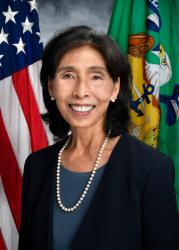Liquidity in U.S. bond markets evaporated in March 2020 as the economic and financial implications of COVID-19 became apparent. Large and widespread selling of bonds by nonbank financial institutions, foreign central banks, and many others overwhelmed the supply of liquidity by the securities dealers that act as bond market intermediaries. The Federal Reserve took massive, unprecedented interventions to restore market liquidity. This reflects the extraordinary growth in the size of U.S. bond markets in recent years, increased holdings of Treasury securities by investors that may need to rapidly sell them in periods of stress, and a substantial reduction in the capacity or willingness of securities dealers to meet demands for liquidity in U.S. bond markets under market-wide stresses.
We seek to complement efforts by policymakers to address these issues by proposing four measures that are intended to increase the supply of market liquidity in stress periods.
First, we propose that the Federal Reserve create a new standing repurchase (repo) facility to support market liquidity in periods of broad stress through regulated dealers under pre-established arrangements. Currently, the Federal Reserve can provide liquidity directly only to commercial banks and other insured depository institutions, except in emergency situations. This patchwork backstop is ineffective for supporting credit in stress situations when the credit needs of the U.S. economy now are met more through bond issuance in markets than through bank loans.
A standing repo facility that offers backstop financing of Treasury and agency securities in stress periods, secured by those securities as collateral, would encourage more dealers to invest in market-making capacity, and that, in turn, would allow them to supply liquidity to U.S. bond markets in normal periods and to be able to accommodate clients’ needs in abnormal periods.
Second, we propose serious consideration be given to a mandate for wider use of central clearing for Treasury securities, starting with a thorough study, as proposed by Darrell Duffie (2020). Broader central clearing through a central counterparty clearinghouse (CCP) would increase the supply of liquidity by the largest bank-affiliated dealers by easing constraints because bank capital and leverage requirements recognize the risk reduction from multilateral netting of cleared trades. These reforms should be implemented to encourage smaller dealers also to increase capacity, and not to increase the concentration of the largest dealers.
Third, we propose targeted changes to bank regulations to improve liquidity provision by bank-affiliated dealers without reducing their overall safety and soundness. We propose that reserves at the central bank be permanently excluded from the supplementary leverage ratio (SLR) because they are riskless, but we do not support permanent exclusion of Treasuries, which have interest rate risk. We also propose replacing some of the higher static buffers of the enhanced SLR (eSLR) with a countercyclical component, which could be released in episodes of market-wide stress to support liquidity of Treasury markets.
Fourth, we propose increased data collection, especially for bilateral uncleared repo, and disclosure to improve transparency about broker-dealers. These data are critical to better monitor funding risks and leverage in nonbank financial intermediation and to reduce moral hazard from a standing facility.
We believe that all four sets of reforms are needed. Any one on its own would not be enough to significantly increase the resilience of Treasury markets in both normal periods and stress periods. These reforms are intended to expand the capacity for dealers to absorb procyclical demand surges for liquidity, while minimizing drawbacks to safety and soundness of large bank-affiliated dealers. Importantly, they would reduce the need for the Federal Reserve to intervene with ex post emergency actions to support Treasury market liquidity outside of the most extreme circumstances.
Pat Parkinson is a Special Advisor at the Bank Policy Institute—a nonpartisan public policy, research, and advocacy group. The authors did not receive financial support from any firm or person for this article, and other than the aforementioned or activities listed on Nellie Liang’s expert profile, from any firm or person with a financial or political interest in this article. The authors are currently not officers, directors, or board members of any organization with an interest in this article. The views expressed in this piece are those of the authors and do not represent the positions of the Bank Policy Institute or Brookings. No organization had the right to review this work prior to publication.







